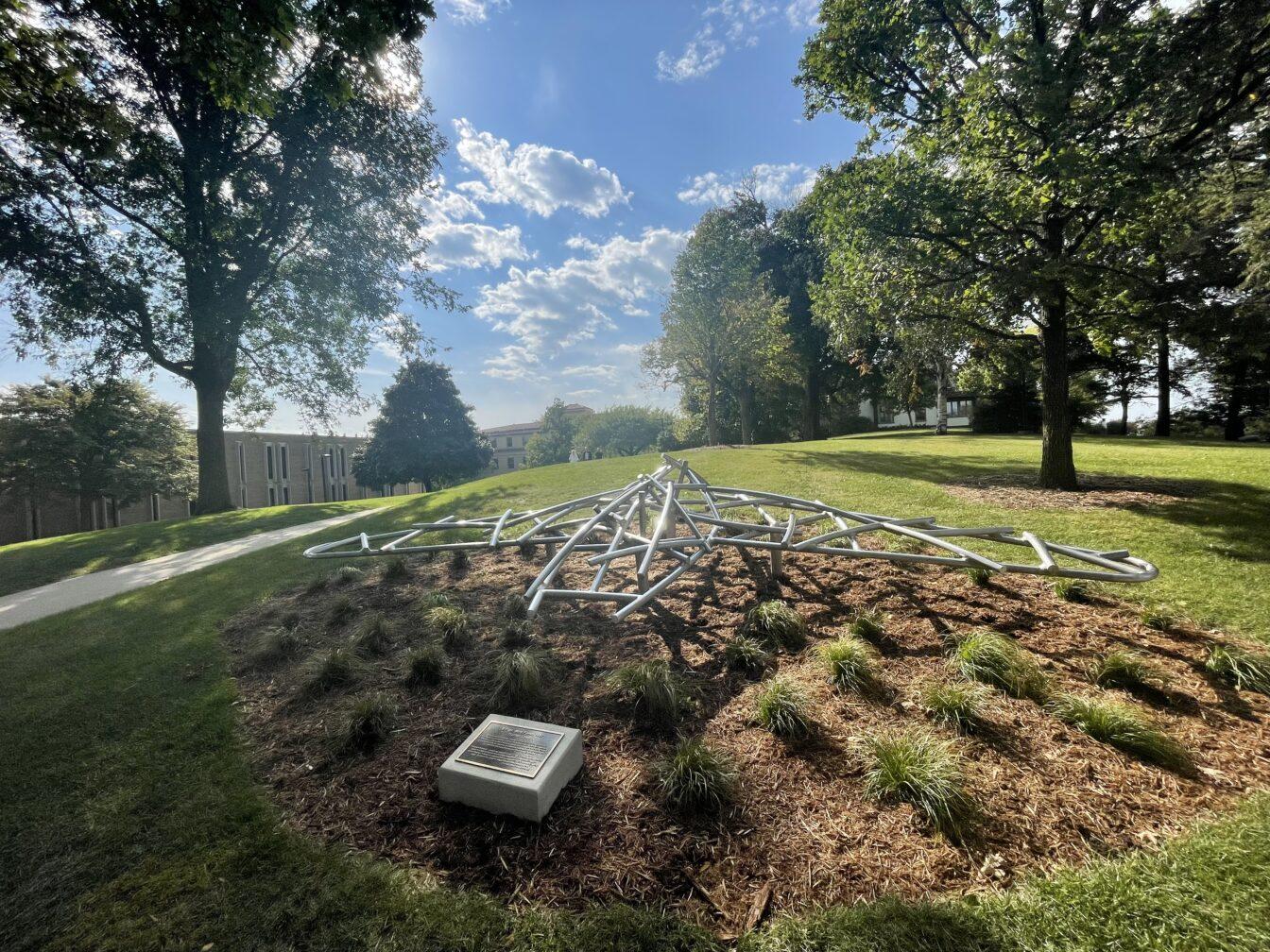A nearly 30-year-old artwork created by former University of Wisconsin professor Truman Lowe found a permanent home on Observatory Hill overlooking Lake Mendota. Lowe, who is of Ho-Chunk descent, passed away in 2019. He was honored and commemorated on Sept. 15 at the official dedication of his sculpture “Effigy: Bird Form” to the UW campus.
The artwork, created in 1997, was displayed in a yearlong exhibition featuring 20th century art at the White House Jacqueline Kennedy Garden.
A few years ago, a member of Lowe’s family came to UW’s Tribal Relations department to suggest that the artwork be moved to campus, a place where Lowe had deep connections on both a personal and spiritual level, UW Director of Tribal Relations Carla Vigue said.
“The Lowe family considers this place his home, where he spent a great deal of time living and teaching,” Vigue said. “The Ho-Chunk have lived on and occupied this land in particular for thousands of years, and it is important for people to understand the history of both the land and its people.”
The sculpture is constructed to resemble a great bird that is about to take flight. The university considered numerous locations around campus for its installation, but finally decided that Observatory Hill be its final resting place. The area is peppered with ancient Ho-Chunk mounds, a fitting place for the great bird to take-off, Vigue said.
For students and Madison residents, “Effigy: Bird Form” serves as a symbol of remembrance and honor for the Ho-Chunk nation, the original inhabitants of the Madison area. Perched on Observatory Hill, the artwork provides the people with an opportunity to reflect on the land that they call home, Vigue said.
“When you look at a piece like “Effigy: Bird Form,” it’s really a chance to sit and contemplate where we are and what this land means not just to the students in the community, but also the people who originally lived here,” Vigue said.



